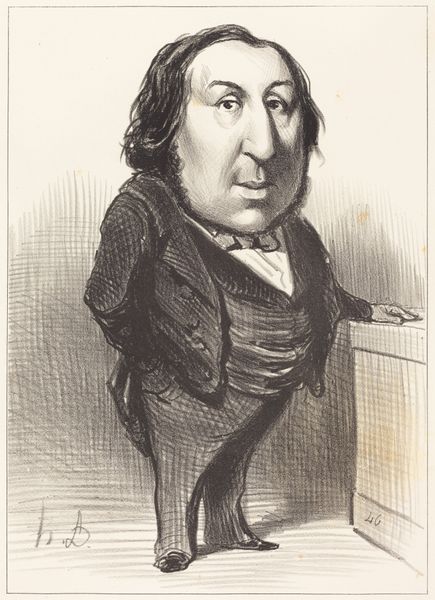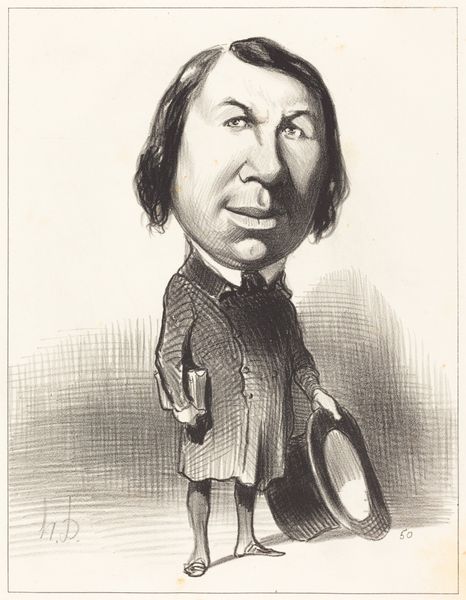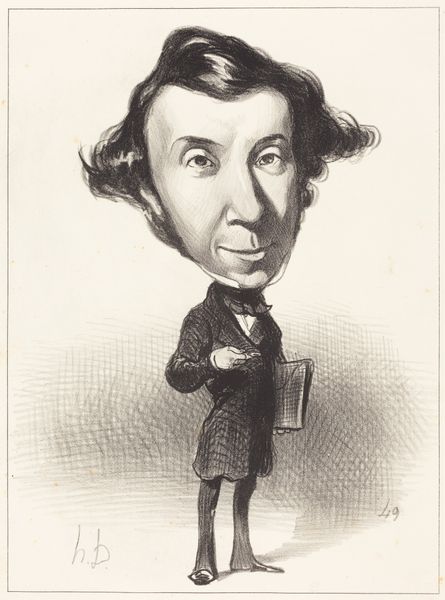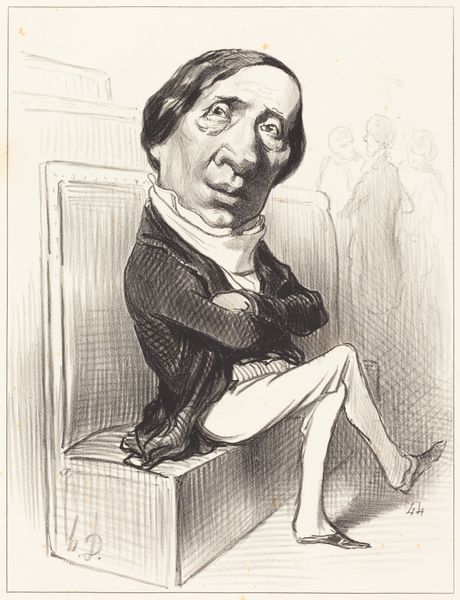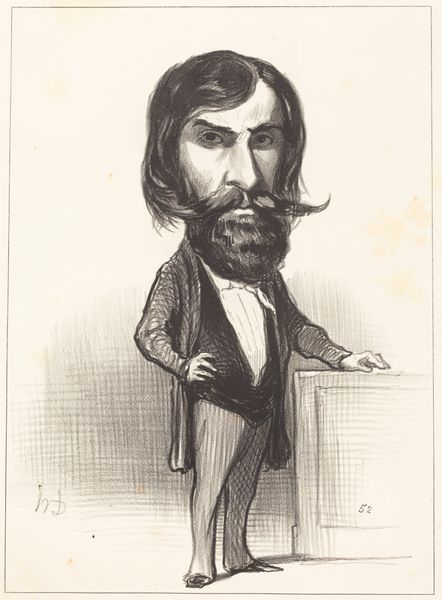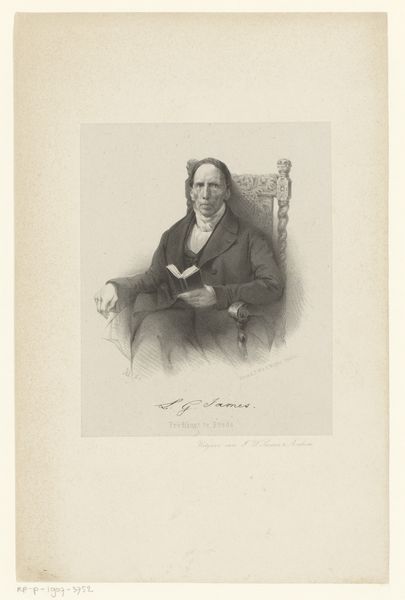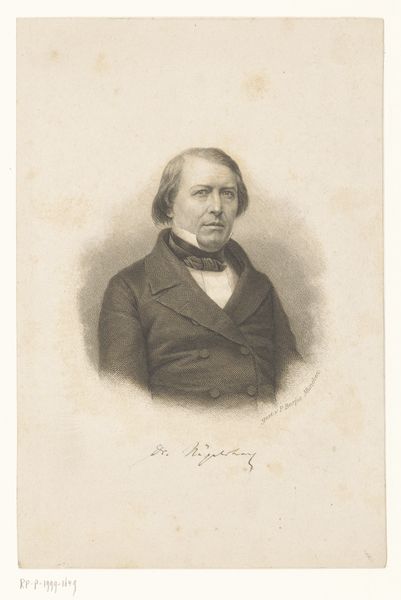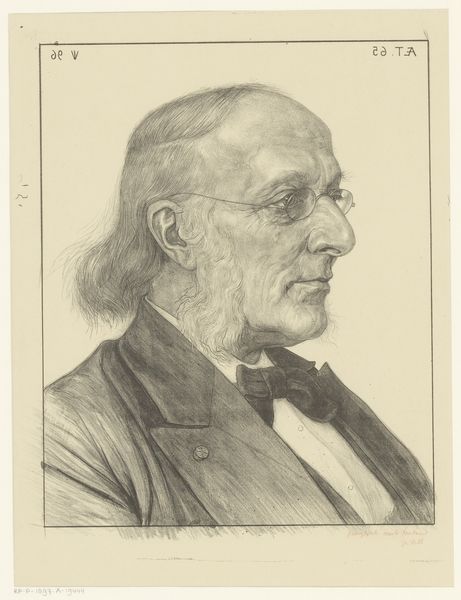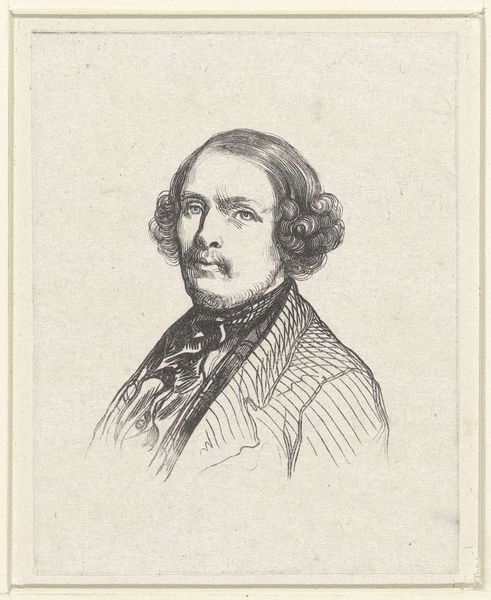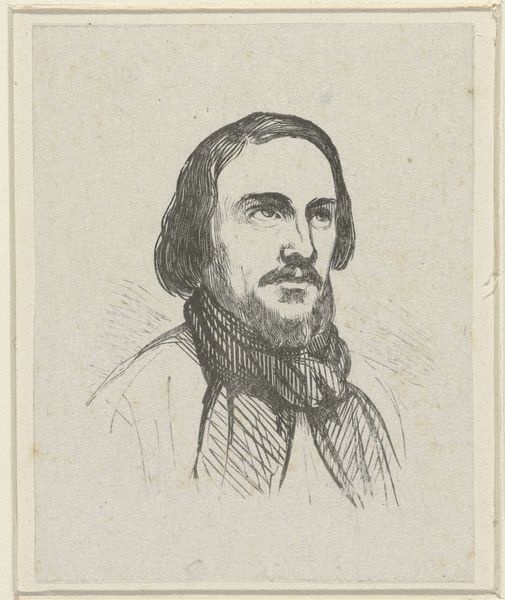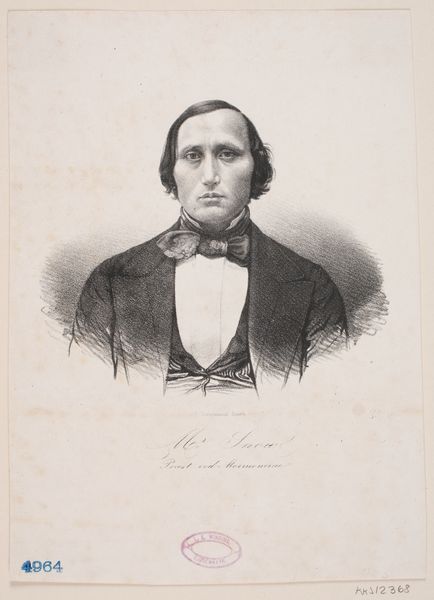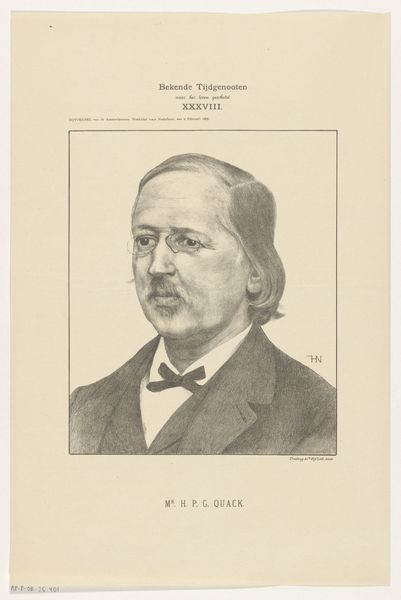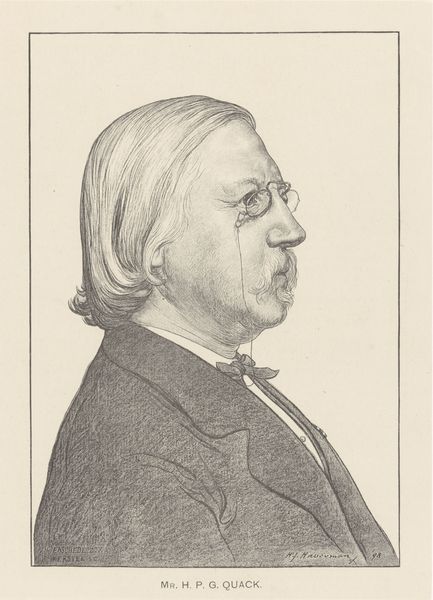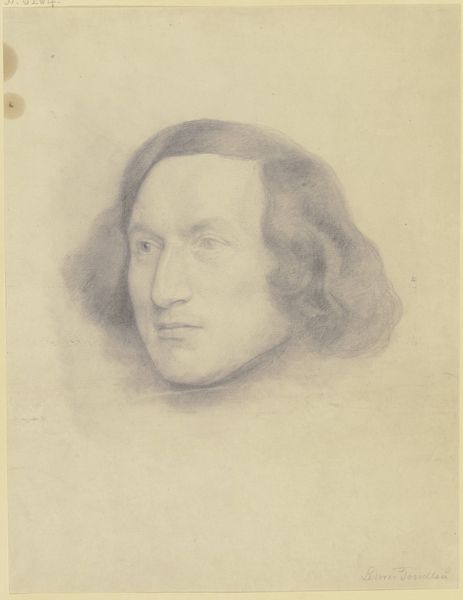
lithograph, print
#
portrait
#
lithograph
# print
#
caricature
#
caricature
#
portrait drawing
#
genre-painting
#
portrait art
#
realism
Copyright: National Gallery of Art: CC0 1.0
Curator: This is Honoré Daumier’s lithograph, "Auguste Avond," created in 1849. What’s your initial reaction to this portrait? Editor: The cross-hatching and exaggerated features create such a weighty and critical feeling. You immediately get the sense that Daumier is commenting on more than just Avond’s physical appearance. Curator: Exactly. As a lithograph, the image relies heavily on the skills of the printmaker. The labor involved in creating these lines is worth noting: each line etched into the stone contributes to that feeling you mentioned. It was then reproduced en masse for circulation in publications. Daumier aimed for wide distribution. Editor: Which speaks directly to the political climate of the time. Consider the rise of illustrated newspapers, and how Daumier used these platforms to critique the bourgeoisie after the 1848 Revolution. Avond is a "type," an embodiment of certain societal values, made accessible to the masses through this affordable medium. Curator: The choice of lithography allowed for a level of detail unattainable in wood engraving at that time. This adds to the complexity of the critique; look at the details in the clothing – particularly the checkered pattern on Avond’s trousers. Each line painstakingly rendered, highlighting status through visible signs of consumerism. Editor: Daumier weaponized portraiture. He’s not just presenting a likeness; he's building a social commentary. His images directly influence public perception, crafting opinions around people in power – using art to participate directly in the political discourse. Curator: This challenges our understanding of art’s role at that moment in France. Rather than being merely decorative, this lithograph acts as social mirror, reflecting—and distorting—the values of the rising middle class back at themselves. Editor: Looking at the physical details—the way Daumier employed readily available and affordable materials—shifts our focus towards thinking about how it reached such a wide audience. It’s truly democratic in a way traditional portraiture was never meant to be. Curator: Considering Daumier's commitment to challenging social norms and the structures that supported them through inexpensive, accessible images gives this piece particular significance. Editor: A poignant reminder of the intersection between material, medium, and socio-political expression.
Comments
No comments
Be the first to comment and join the conversation on the ultimate creative platform.
